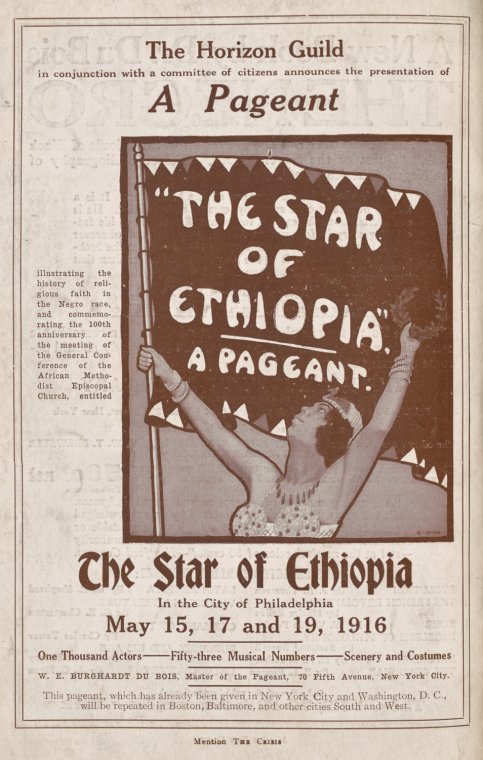Archives
J. Rosamond Johnson and "Lift Every Voice"
The National Museum of African American History & Culture opens on September 24, 2016. The opening ceremonies will be broadcast and streamed to museum, libraries and institutions around the country. The Smithsonian has decided to name the celebration “Lift Every Voice,” borrowing the phrase from the song known as America’s Black National Anthem.
James Weldon Johnson’s poem was set to music by his composer brother, J. [John] Rosamond Johnson in 1899 and premiered and published in 1900. I hope that as part of the events, there is a performance of the song, which is both deeply meaningful and artistically beautiful. Both Johnson brothers had long distinguished careers in literature and diplomacy (JW) and music (JR).
Both are amply represented in the collections of The New York Public Library, but as my LPA blog and contribution to the events, I want to focus on aspects of J. Rosamond Johnson’s careers, which have become more discoverable thanks to NYPL’s Digital Collections and Electronic Resources. I wrote “careers” since, in the career path of an early twentieth century African American musician, he wrote art songs, chorales, patriotic songs, and rags, while serving as a baritone, pianist and conductor. He was active in both the African American and Broadway/Tin Pan Alley worlds.
The photograph in formal wear shows him in his “class vaudeville” act with lyricist Bob Cole, which headlined on the Keith circuit, 1901-1903. A search of the Historic African American Newspapers revealed many positive reviews such as that in The (Indianapolis) Freeman (August 16, 1902) which praised the “artful renditions of the parlor songwriting team.” Just to hit a few career points—he was the first African American conductor of a Broadway show, Hello Paris (1911); conducted the famed Clef Club Orchestra at Carnegie Hall; and, decades later, played Frazier in the 1935 original cast of the opera Porgy and Bess and the 1942 revival.
As part of this national thinking about “Lift Every Voice and Sing” in its role as an anthem for the NAACP, it seems appropriate, however, to focus on his lesser-known collaboration with W.E.B. DuBois. This research emerged as a sidebar to curating Shakespeare’s Star-Turn in America and the section on the May 1916 Shakespeare Tercentennial, last spring.
As part of the Shakespeare Celebration in New York, the organizing committee connected community organizations, such as settlement houses and school systems, to the main event, the pageant Caliban…By the Yellow Sands. They worked with social clubs, churches and fraternal groups and promoted Shakespeare-related events performances, concerts, and lectures.
The 1916 souvenir program in the Billy Rose Theatre Division lists “colored” organizations, primarily Harlem-based music and literary groups offering performances, readings and similar cultural/social events. The shocker at the end of the list of May performances was The Star of Ethiopia, the name of the 1913 pageant by DuBois. Thanks to the African American Periodicals and Historical Newspaper, it is possible to track The Star of Ethiopia through the news, social and entertainment pages of daily newspapers, such as the Washington Bee and Indianapolis Freeman, as well as the NAACP’s own magazine The Crisis. There was no evidence that it had been revived in NY and its presence in a Shakespeare celebration should have evoked general comment.
In research to determine why those organizations were involved, we realized that all were associated with J. Rosamond Johnson, educator/director Charles Burroughs and dance educator Dora Cole Norman. We discovered that they had also all been on the original production team of W.E.B. DuBois’s 1913 pageant The Star of Ethopia (which, in New York, celebrated the 50th anniversary of Emancipation). They may have promoted the possibility of a 1916 revival in New York by linking it to the Shakespeare pageant and corollary events.
We learned that The Star of Ethopia was performed in May 1916, but it was in Philadelphia, and linked to the centennial of the African Methodist Episcopal Church. In fact, the Digital Collections image is an announcement for the Philadelphia performances, as published in The Crisis (vol. 11, #6). The pageant did not appear during the New York or Boston seasons of Caliban.
Our congratulations to the new Museum and its staff. As the Johnsons wrote in the song’s second verse, “Now we stand at last.”
Read E-Books with SimplyE
 With your library card, it's easier than ever to choose from more than 300,000 e-books on SimplyE, The New York Public Library's free e-reader app. Gain access to digital resources for all ages, including e-books, audiobooks, databases, and more.
With your library card, it's easier than ever to choose from more than 300,000 e-books on SimplyE, The New York Public Library's free e-reader app. Gain access to digital resources for all ages, including e-books, audiobooks, databases, and more.
If you don’t have an NYPL library card, New York State residents can apply for a digital card online or through SimplyE (available on the App Store or Google Play).
Need more help? Read our guide to using SimplyE.

